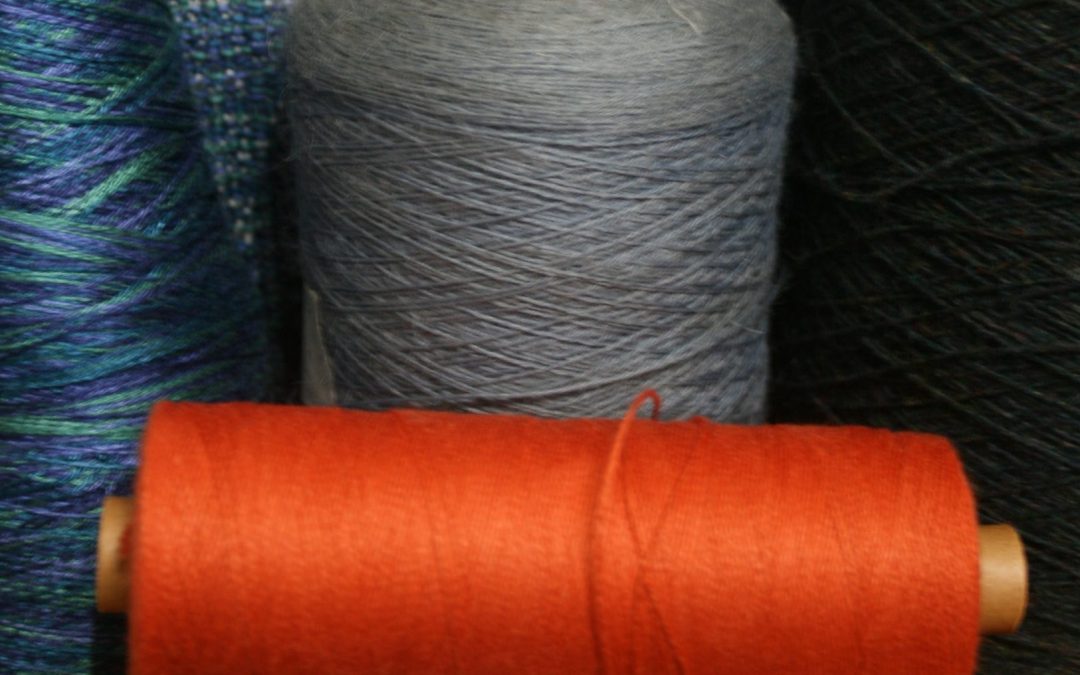What kind of weaver are you? **
Do you weave for a specific reason, do you like to follow projects in a book or online, or do you relish the thought of creating something completely original whether for yourself, a friend, a client or an exhibition?
If you’re reading this, then the chances are that you already love weaving, but did you know that there are many different kinds of weavers? From weaving for yourself, your home, your friends and loved ones through to professional weaving, artists and teachers, there are so many varied reasons for weaving and different kinds of approaches.
I’ve been looking at these different ‘personalities’ of weavers.** Take a look and see which kind you might be!
The Ecological Weaver
This weaver is very aware of current ecological concerns and wants to learn about the production methods of yarn and to source their yarns from reputable and eco-responsive suppliers, re-using and repairing wherever possible, quite often using ‘found’ items or scavenged materials in their weaving. The beauty of these pieces are most often shown through simple weaving methods which showcase their more unusual yarn choices.
The Giving Weaver
This weaver loves to make useful gifts for friends and family or for charity. This is the weaver who scours books and online sources for projects that have a use and look lovely, carefully selecting colours, yarns and projects for specific people, creating that very special scarf, cushion, bag or set of table mats that would fit a friend’s colour scheme and be a treasured reminder of a wonderful relationship.
The Methodical Weaver
This weaver loves to learn and make things but feels unsure about stepping outside their comfort zone. Having resources that recommend or suggest what yarns to buy and what setts to use, threading drafts, tie-ups and treadling patterns is a re-assuring presence when they are weaving, saving money, potential frustration and the fear of ‘getting it wrong’.
The Aspirational Weaver
This weaver loves to create cloth or pieces that wow. They may combine elements from different designs, having the confidence to select the bits that interest them and put things together in ways that don’t necessarily mean learning new techniques, although they certainly love exploring techniques they didn’t previously know about or that they are interested in. They also love combining wonderful and unexpected colour combinations and different scales.
The Sharing Weaver
This weaver loves to share what they learn with anyone who is interested. They are lynch-pins in study groups and guilds, often taking on the role of mentor to newer weavers, sharing resources, yarns, hints and tips. They are the person other weavers turn to for help, to have great discussions with about the finer points of weaving and design and to brainstorm with. They are the ones who often know about the latest book or new products on the market, they keep their antennae on alert so they can learn what’s going on, but also so that they can share this information with everyone.
The Innovative Weaver
This weaver loves to learn. It doesn’t really matter what end use the warp might have, this weaver is a serial experimenter. If something useful emerges from the experiments, then that is wonderful but it’s not the main aim. They may be on a personal quest, or something that grabs them when they are browsing online or as part of a study group, but they will follow wherever that path leads them, even into uncharted waters.
Most of us are a combination of two or more of these ‘personality’ types, but whatever your weaving ‘personality’, The Loom Room France can give you the opportunity to extend and expand your weaving so that you can have more confidence in tackling projects, whether for yourself or for others.
Our courses for this season can be found here, so why not take a look and give us a try! We look forward to seeing you….
**Please don’t take this too seriously – it’s a bit of fun based on personal observation and light-hearted conversations with fellow weavers and students and is obviously a huge generalisation.

